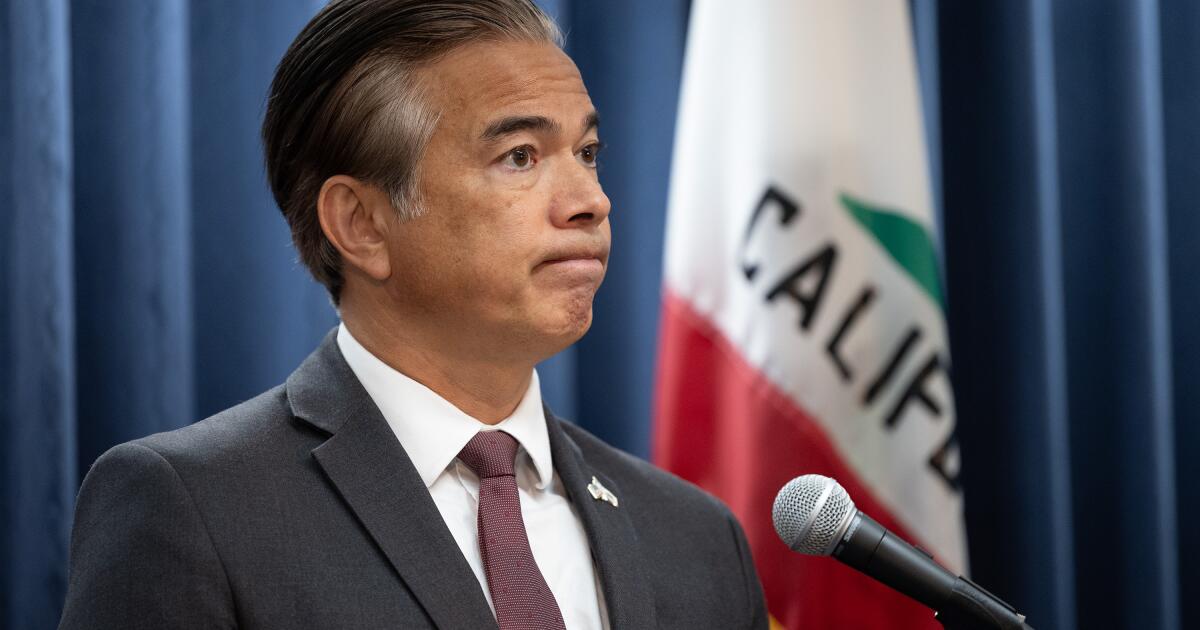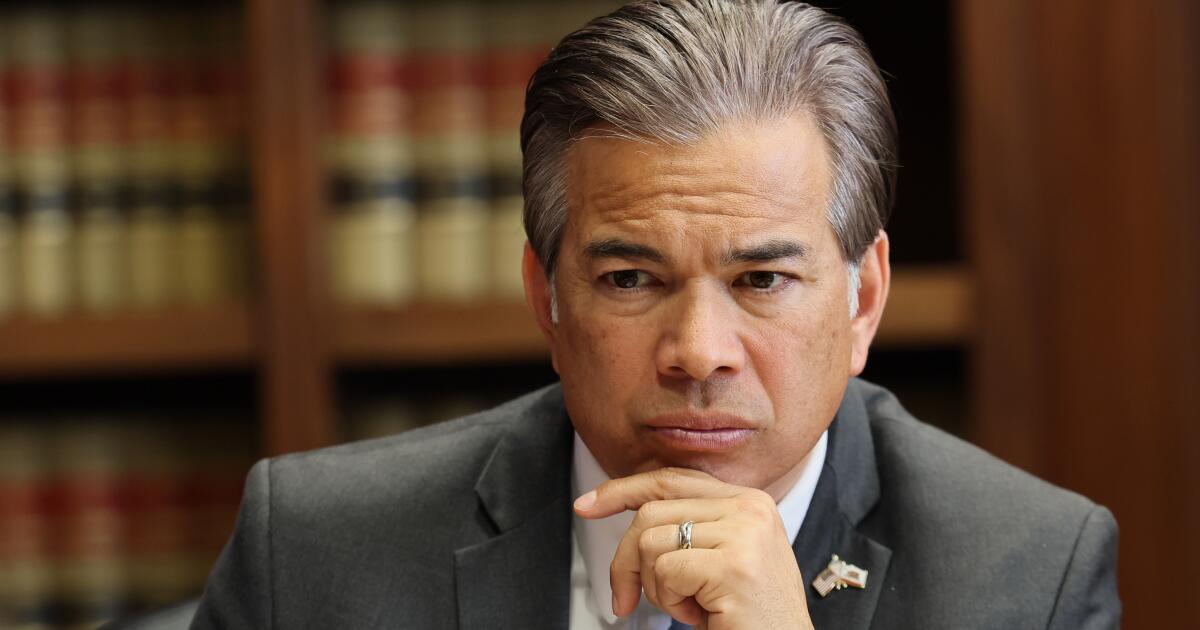Judge pumps brakes on Bonta’s push to take over L.A. County juvenile halls
A judge temporarily blocked California Atty. Gen. Rob Bonta’s attempt to take over Los Angeles County’s beleaguered juvenile halls on Friday, finding that despite evidence of a “systemic failure” to improve poor conditions, Bonta had not met the legal grounds necessary to strip away local control.
After years of scandals — including frequent drug overdoses and incidents of staff violence against youths — Bonta filed a motion in July to place the county’s juvenile halls in “receivership,” meaning a court-appointed monitor would manage the facilities, set their budgets and oversee the hiring and firing of staff. An ongoing staffing crisis previously led a state oversight body to deem two of L.A. County’s halls unfit to house children.
L.A. County entered into a settlement with the California Department of Justice in 2021 to mandate improvements, but oversight bodies and a Times investigation earlier this year found the Probation Department was falling far short of fixing many issues, as required by the agreement.
On Friday, Los Angeles County Superior Court Judge Peter A. Hernandez chastised Bonta for failing to clearly lay out tasks for the Probation Department to abide by in the 2021 settlement. Hernandez said the attorney general’s office’s filings failed to show that a state takeover would lead to “a transformation of the juvenile halls.”
The steps the Probation Department needs to take to meet the terms of the settlement have been articulated in court filings and reports published by the L.A. County Office of the Inspector General for several years. Hernandez was only assigned to oversee the settlement in recent months and spent much of Friday’s hearing complaining about a lack of “clarity” in the case.
Hernandez wrote that Bonta’s motion had set off alarm bells about the Probation Department’s management of the halls.
“Going forward, the court expects all parties to have an ‘all-hands’ mentality,” the judge wrote in a tentative ruling earlier this week, which he adopted Friday morning.
Hernandez said he would not rule out the possibility of a receivership in the future, but wanted more direct testimony from parties, including Probation Department Chief Guillermo Viera Rosa and the court-appointed monitor over the settlement, Michael Dempsey. A hearing was set for Oct. 24.
The attorney general’s office did not immediately respond to a request for comment.
“The Department remains fully committed to making the necessary changes to bring our juvenile institutions to where they need to be,” Vicky Waters, the Probation Department’s chief spokesperson, said in a statement. “However, to achieve that goal, we must have both the authority and support to remove barriers that hinder progress rather than perpetuate no-win situations.”
The California attorney general’s office began investigating L.A. County’s juvenile halls in 2018 and found probation officers were using pepper spray excessively, failing to provide proper educational and therapeutic programming and detaining youths in solitary confinement for far too long.
Bonta said in July that the county has failed to improve “75%” of what they were mandated to change in the 2021 settlement.
A 2022 Times investigation revealed a massive staffing shortage was leading to significant injuries for both youths and probation officers. By May of 2023, the California Board of State and Community Corrections ordered Barry J. Nidorf Juvenile Hall in Sylmar shuttered due to unsafe conditions. That same month, an 18-year-old died of an overdose while in custody.
The county soon reopened Los Padrinos Juvenile Hall in Downey, but the facility quickly became the site of a riot, an escape attempt and more drug overdoses. Last year, the California attorney general’s office won indictments against 30 officers who either orchestrated or allowed youths to engage in “gladiator fights.” That investigation was sparked by video of officers allowing eight youths to pummel another teen inside Los Padrinos, which has also been deemed unfit to house youths by a state commission.
In court Friday, Laura Fair, an attorney from the attorney general’s office, said that while she understood Hernandez’s position, she expressed concern that teens are still in danger while in the Probation Department’s custody.
“The youth in the halls continue to be in grave danger and continue to suffer irreparable harm every day,” she said.
Fair told the court that several youths transferred out of Los Padrinos under a separate court order in recent weeks showed up at Nidorf Juvenile Hall with broken jaws and arms.
She declined to comment further outside the courtroom. Waters, the Probation Department’s spokesperson, said she was unaware of the situation Fair was describing but would look into it.
Despite the litany of fiascoes over the last few years, probation leaders still argued in court filings that Bonta had gone too far.
“The County remains open to exploring any path that will lead to better outcomes. But it strongly opposes the DOJ’s ill-conceived proposal, which will only harm the youth in the County’s care by sowing chaos and inconsistency,” county lawyers wrote in an opposition motion submitted last month. “The DOJ’s request is almost literally without precedent. No state judge in California history has ever placed a correctional institution into receivership.”
Under the leadership of Viera Rosa, who took office in 2023, the Probation Department has made improvements to its efforts to keep drugs out of the hall, rectify staffing issues and hold its own officers accountable for misconduct, the county argued.
The department has placed “airport-grade” body scanners and drug-sniffing dogs at the entrances to both Nidorf and Los Padrinos in order to stymie the influx of narcotics into the halls, according to Robert Dugdale, an attorney representing the county.
Dugdale also touted the department’s hiring of Robert Arcos, a former high-ranking member of the Los Angeles Police Department and L.A. County district attorney’s office, to oversee security in the facilities.
The motion claimed it was the Probation Department that first uncovered the evidence that led to the gladiator fight prosecutions. Bonta said in March that his office launched its investigation after it reviewed leaked footage of one of the incidents.



